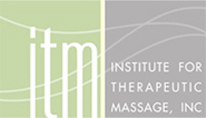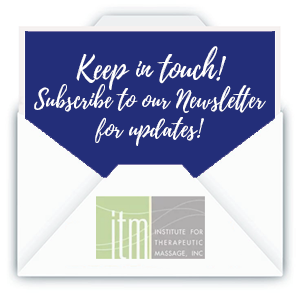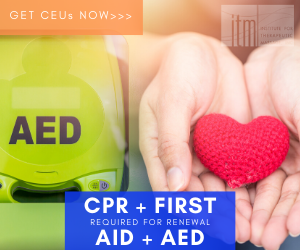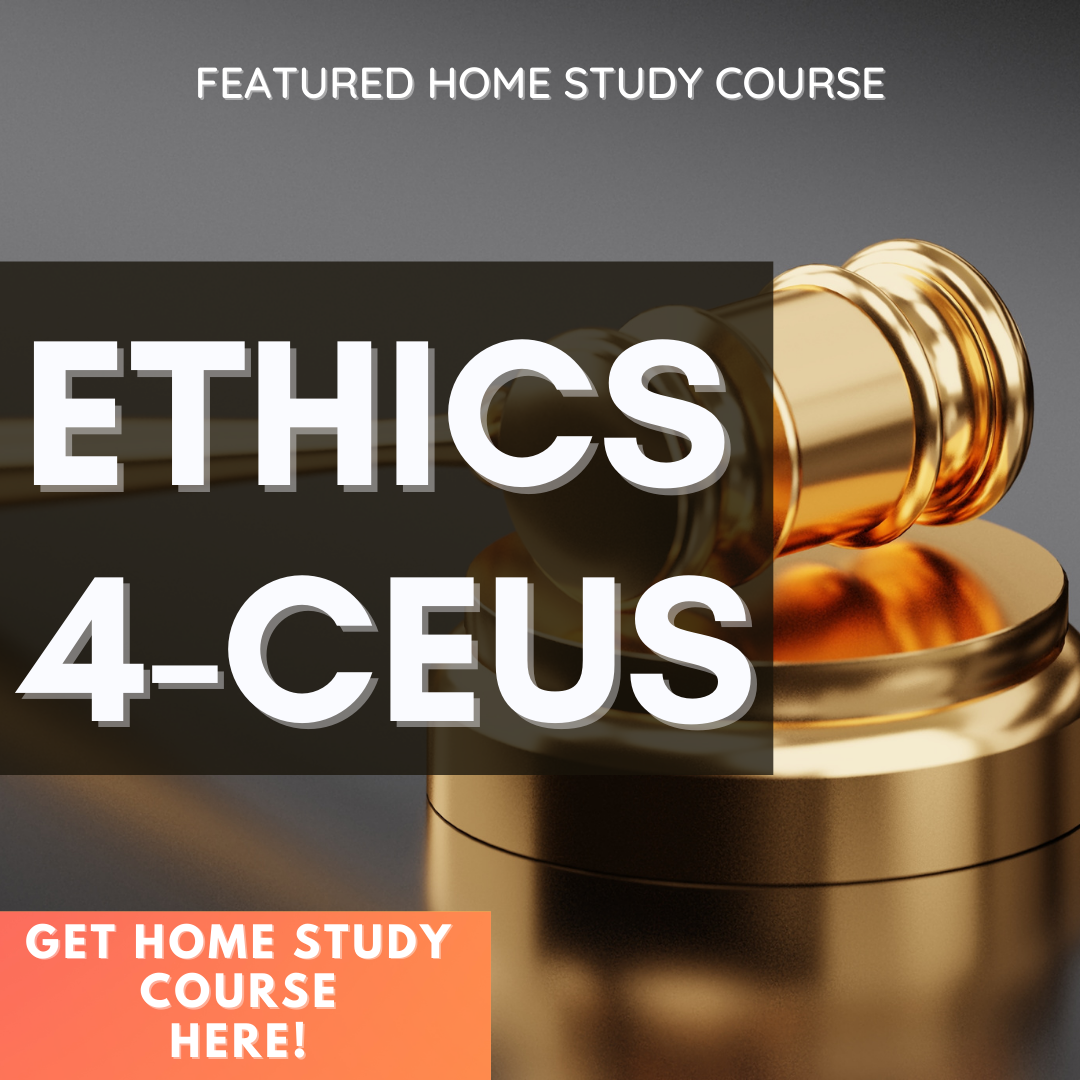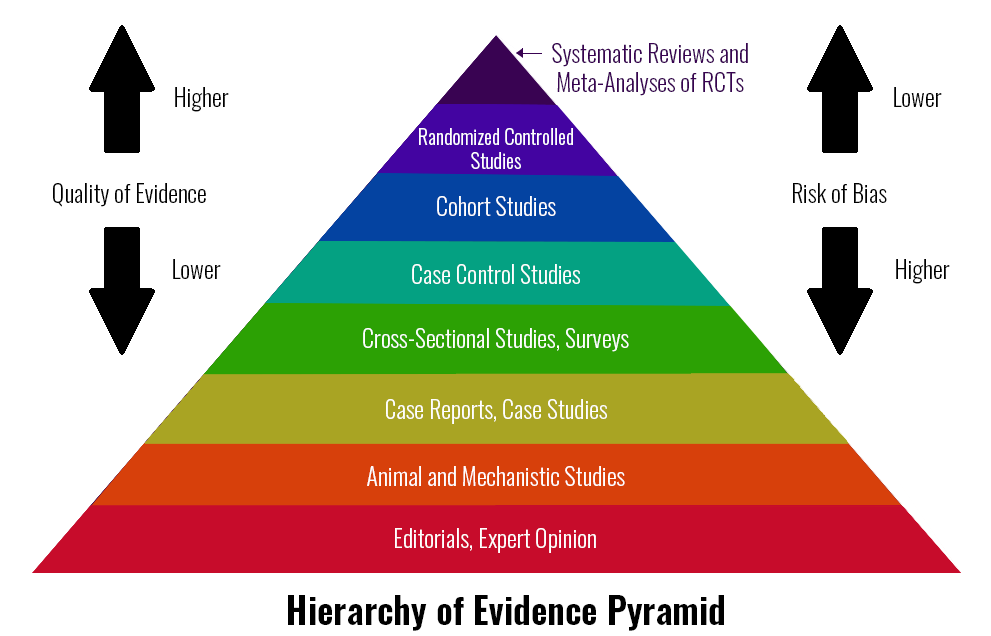
Massage therapists are encouraged to maintain a commitment to fostering research literacy. Research literacy is the ability to find, read, understand, evaluate and apply research literature. Unfortunately, for many, keeping up with the latest research is intimidating.
In this article, we will review a few basic concepts for improving research literacy for massage therapists, as well as a few great resources to check out.
Evidence-Based Practice
A basic concept that is discussed in applying massage therapy research is “Evidence-Based Practice.” An evidence-based practice involves a basic philosophy toward therapeutic massage where the standards of the scientific method are applied to clinical behaviors.
There are those who prefer the term “Evidence-Informed Practice,” which takes into consideration scientific evidence, clinical experience, and careful observation.
In the evidence-based practice of therapeutic massage, it is important to try to stay up-to-date on the latest research findings.
This would include staying up-to-date on research findings about different modalities and techniques, as well as for different conditions and also for general clinical behavior.
Research on Different Modalities & Techniques
The research on different massage techniques and methods is far and wide. There are basic ways in which research on methods considers different factors, including:
- Style or Modality: Research may assess different types of massage therapy, for example, examine Swedish massage or reflexology.
- “Dose”: Research may examine how factors such as the length and frequency of treatment sessions relates to therapeutic outcomes.
- Timing: Research may examine how the timing of a technique has an effect, such as before or after surgery, before sleep, before or after pregnancy, or before or after a marathon.
Research on Different Conditions
The research on different massage therapy conditions is also vast. One reason assessing the literature on condition-specific treatment outcomes can seem overwhelming is because there are so many health conditions.
In reviewing massage therapy research for different health conditions, it is important to consider The Hierarchy of Evidence Pyramid.
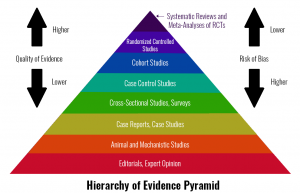
The pyramidal shape of the hierarchy represents the amount of evidence generally available from each type of study design and the strength of evidence expected from indicated designs.
As one ascends the hierarchy, the amount of evidence generally declines. Likewise, as we ascend the pyramid, the quality of the evidence is increased and the risk of bias reduced.
We are all familiar with the statement, “Correlation does not equal causation.”
Because of the study designs, there is more confidence in casual relationships given by studies at the top of the hierarchy. In the terminology of research, the studies at the apex of the hierarchy of evidence help establish that a treatment is not only effective but also efficacious. Studies that are randomized or double blinded, and studies that synthesize existing RCTs, provide evidence that a treatment is efficacious.
Therefore, when citing research findings on the effect of therapeutic massage on various health conditions, it is important to be particularly aware of any meta-analyses of systematic randomized controlled trials.
However, as mentioned, both RCTs and meta-analyses of them can be scant. This does not mean that we cannot discuss the positive or negative research findings that exist from other studies.
When discussing the research findings of a study from the lower end of the pyramid, such as a single pilot study, it can be important to use the word “MAY” rather than “DOES” when discussing the findings, e.g., “According to this pilot study, massage therapy may be helpful for insomnia.”
By using the word MAY when discussing research findings from the lower portion of the pyramid, you are reflecting the state of knowledge such that there is known uncertainty about whether there is a correlation but not causal relationship.
Research on Different Clinical Behaviors
A last component to consider when examining research is whether the research is analyzing treatment outcomes based upon different types of clinical behavior.
This type of research may feature different design, such as a practice-based research methodology.
An interesting piece of research in this vein is “The Development and Validation of the Client Expectations of Massage Scale,” as well as “Are personal characteristics of massage therapists associated with their clinical, educational, and interpersonal behaviors?”
What is notable about this type of research is that it is examining how characteristics of a practitioner or clinical behaviors, such as accurately explaining expectations to a client, may have an effect.
Conclusion
Research literacy involves an ongoing commitment to reviewing scientific studies and keeping abreast with the latest findings in massage therapy research.
Are you ready to test your knowledge? Click here for a helpful online quiz to test your knowledge of key concepts in massage therapy research literacy.
You can also check out the video below, which is an episode of “Research Perch,” a video series by the Massage Therapy Foundation that aims to improve research literacy for massage therapists by reviewing research and discussing it in practical ways to help therapists incorporate research into their clinical practices.
